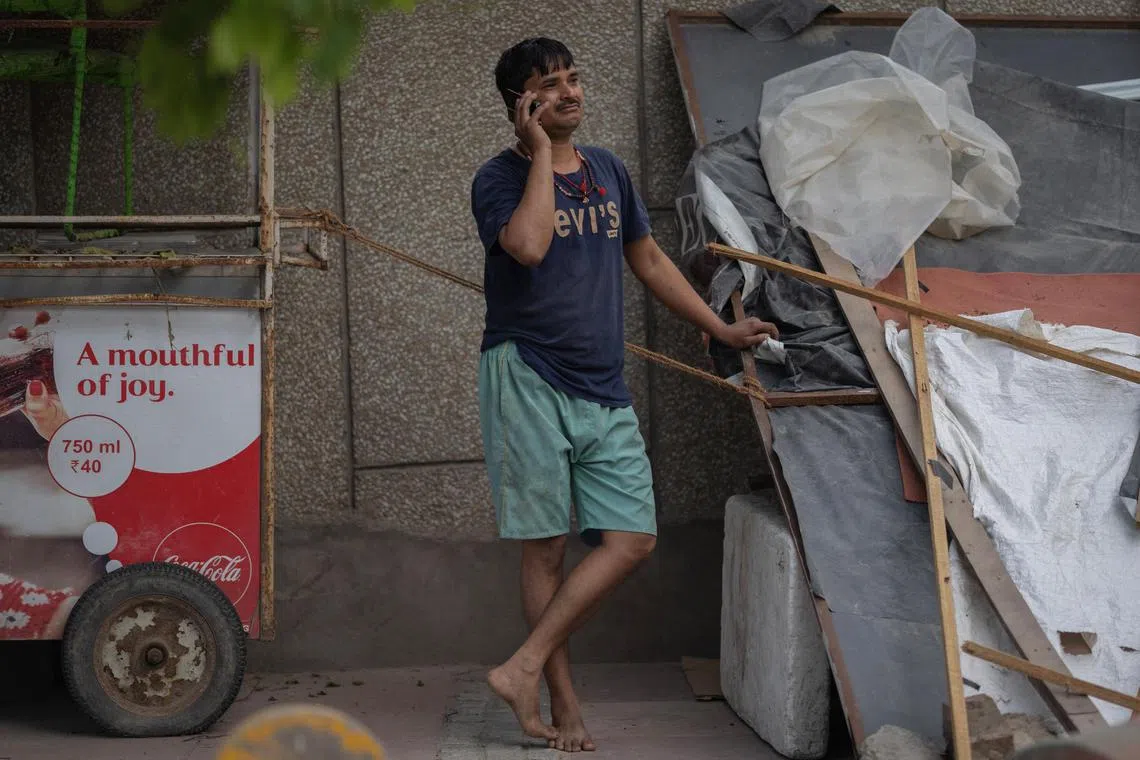Indian telcos’ proposal sparks concern over higher user costs
Sign up now: Get insights on Asia's fast-moving developments

The proposal may require popular online communication platforms to pay a commission for using Internet service providers' networks.
PHOTO: REUTERS
Follow topic:
NEW DELHI - India’s Internet service providers have come up with a controversial proposal that may require popular online communication platforms such as WhatsApp and Telegram to pay them a commission for using their networks.
The Cellular Operators Association of India, which represents the country’s three leading private telcos, has proposed that such over-the-top (OTT) communication services, which include the likes of Zoom and Instagram, contribute to setting up and maintaining their telecom infrastructure, instead of taking “a free ride” on them.
The association’s proposal, made in September, was in response to a consultation paper released by the Telecom Regulatory Authority of India, which had sought public inputs on a regulatory mechanism for OTT communication services in the country.
The telcos’ proposal added that the rapidly growing use of these OTT platforms for voice calls and messaging services had led to an “erosion of revenues” for them, especially at a time when they have had to make higher investments to expand their networks and keep pace with growing data traffic.
OTT communication services are calling and messaging applications that are accessed over the Internet using infrastructure provided by Internet service providers.
Reducing costs has been a priority for debt-laden telcos in India, which have been trying to pass on a share of their expenses to the likes of WhatsApp and Telegram. The country’s Internet subscriber base grew to nearly 866 million in December 2022, with more than 500 million users relying on WhatsApp for voice calls and messaging.
The proposal to get OTTs to pay a commission has raised worries among consumer rights organisations, as these platforms could ultimately pass on a share of the cost to their consumers, who are already paying telcos for data and even OTT platforms for their services.
Mr Amol Kulkarni, research director at CUTS International, a research and advocacy think-tank, said this could prove to be a “double whammy”, particularly for price-sensitive users in India.
“There are several low-income and vulnerable consumers who live on the fringes and for whom OTTs are a substantial source of livelihood, education and infotainment. They will be most adversely impacted,” he told The Straits Times. This could see users either shell out more to access OTT services or make do with partial or poor access, he added.
Some could even be completely cut off from services that may prove to be beyond their reach.
Critics of the proposal also say it is wrong to argue that the OTT services get a “free ride”, as they have increased telcos’ revenues from users who pay these telcos for the data they consume on these services.
The net monthly average revenue per user for telcos rose from 111.45 rupees (S$1.83) in June 2013 to 141.14 rupees in December 2022.
This was driven by a jump in data-based earnings from mobile subscribers. The share of such earnings in total revenue from subscribers has grown more than 10 times, from 8.1 per cent in the quarter ending June 2013 to 85.1 per cent in the quarter ending December 2022.
The Internet and Mobile Association of India, which represents the interests of the online and mobile value-added services industry, has also cautioned that agreeing to the telcos’ demand could distort markets and lead to “rent-seeking” by telcos.
They could, for instance, charge different rates from different OTT services, depending on the business relationship they have with them, even colluding with some to protect market interests.
“This will have a severe effect on net neutrality and disproportionately affect smaller companies and start-ups in India,” it added in its submission to the telecom authority.
Net neutrality is a principle that requires Internet service providers to treat all content flowing through their network without any discrimination. This means they must give users equal access to all legal content. For example, these providers cannot speed up access to WhatsApp or slow down your connection to Viber.
However, the cost-sharing model proposed by Indian telcos could see these firms throttle access to certain OTT platforms as a way to earn more from other service providers that may have higher financial resources and may be more willing to pay them.
Even start-up founders in India have lent their support to the fundamental idea of net neutrality.
Posting in its favour on X, formerly known as Twitter, on Sept 12, Mr Nithin Kamath, the founder of financial services company Zerodha, said: “The destiny of our increasingly digital nation is tied to the Internet remaining open, accessible and neutral for everyone.”
In 2018, India adopted one of the “strongest” net neutrality regimes, following a spirited public campaign that saw major companies roll back services that went against this principle.
This included Facebook, which canned its Free Basics service offering Indians free access to a limited number of websites. Critics had noted that data providers should not favour certain online services over others by offering cheaper or faster access.
The concept of charging OTTs for the traffic they generate has been experimented with elsewhere.
In 2016, South Korea introduced an “Internet traffic tax” model, under which the country’s Internet service providers charge Korean content and application providers a fee for the Internet traffic sent over their networks.
But the Internet Society, an American non-profit advocacy organisation, found this model had led to “inefficient traffic flows, higher costs of data transmission, a more hierarchical... and lower quality of services for users in South Korea”.


